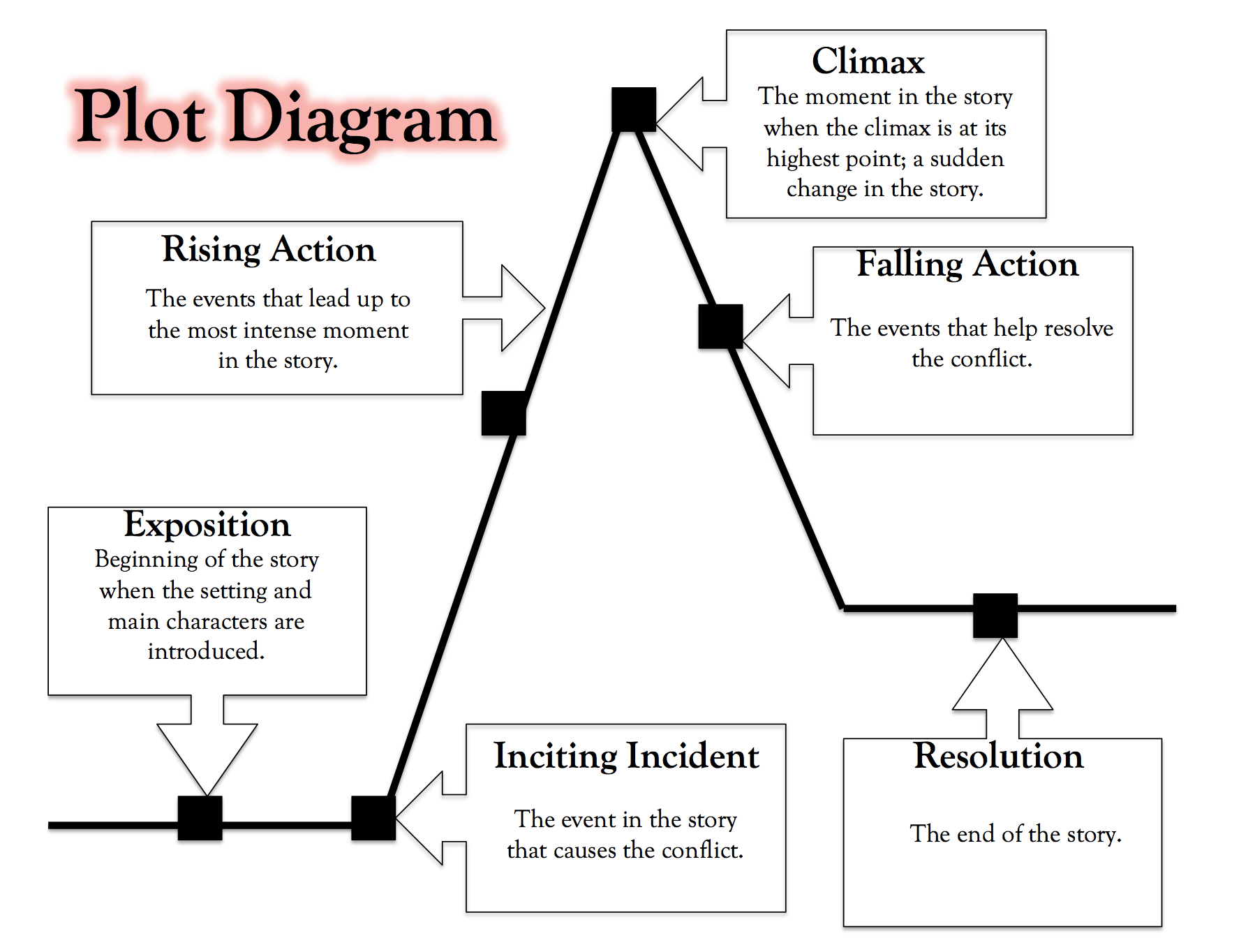Yes, we are going to venture into that argument that is one of the greatest in all of history. No, it is not whether the toilet paper roll pulls from the top of the bottom. This is the one dealing with being a plotter or a pantster. I know there are a ton of you who scream plotting "ruins my inspiration and creativity." For you people, I want you to know that this is far from the case and a little bit of plotting will make your writing go so much better.
Let me start first with the diagram...
We all probably remember this from our days in junior high or high school when we were in our early forms of literature study. Please, those of you who are pantsters, don't jump ship yet. Let me clear something up for you. The plotting that I am talking to is simply a matter of creating significant markers throughout your story to get things going. Think of this as taking a long distance trip. You create for yourself places that you plan on stopping along the way. How you get there and the time you spend to get there is entirely up to you.
I want you to also remember that this chart is pretty flexible. The length of the exposition or the rising action can change a lot. The climax of your story might also change. You could even have two climaxes and the second one is the major turning point in the story.
So, let's talk about some of these points.
The EXPOSITION as the chart defines, is where we get the setting and main characters showing up. Please note that this is not an information dump. We need to have a sense of where the story is happening (the world building) and who the main characters are. Giving us information that we don't need until later in the story should not happen here. The goal is that we get just enough to move those characters from 2-dimensional to 3 dimensional. In other words, what makes them tick.
From this point on, you will start plotting out key moments in your story. This will be the INCITING INCIDENT and the RISING ACTION. You might even get to the CLIMAX of the story. My bet is that, as you thought out your story, you had images of scenes you know you wanted to include. Figure out where you think those might occur. Put these in a logical order along your rising action. In all honesty, I would should for 5. Will you have more along the way
Let's talk about those next three steps in the chart.
The INCITING ACTION is where we see the central CONFLICT of the story take place. Let's look at a fictional contemporary romance idea. Heroine has been working in her own small PR firm but due to recent economic problems in the economy, making it on her own is simply not working out. Not only that, but she has really struggled with creating promotional plans for companies run by men. The women loved her designs but the men were all still stuck in a belief that women should just do women things. She has been looking for new larger companies to move into and potentially shift from PR to standard advertising and marketing. NOTE: All of this information is in the EXPOSITION. She is contacted by a head-hunter who has seen her work and believes that one particular company is a perfect fit for her expertise. Enter hero...
Hero is your classic Alpha Male. He runs his business with a strong male presence. His mother died early on in his life so his entire life was spent around his dad's way of thinking (I'm thinking very Hemingway focused). Now comes the INCITING ACTION. The board of directors of his company is making a huge shift and has decided to take the company in a new direction and are bringing in this new marketing/advertising expert.
This has led us to the CONFLICT of the story. Heroine wants to prove herself in a male dominated company and hero has to come to grips that men may not know anything.
Not an over the top concept but this should be enough for you to see how this is going to play out.
At this point, you would just focus on those key scenes along the RISING ACTION where you want significant things to happen. Just create lists here. Each scene or event should be adding on to the story and moving the characters along in a forward direction. Each contributes one more piece to the puzzle.
Once you determine the conflict, figure out a couple of things that have to happen to make the world all better. This is the FALLING ACTION. Here you might only have two things that have to happen. In the case of this fictional romance, I would have the heroine getting fed up and quitting and the hero realizing his one home for saving the company and this relationship is having to get her back.
The RESOLUTION is the easy part. In our fictional romance, we could see two things happening. First, how will she finally save the company and for him, how will he turn this into a relationship that lives on as a happily ever after..
What I want you to see here is that I am not plotting out EVERYTHING that happens in the story. I just create a few roadmaps a long the way. Can we add to these? Sure. Can some of these things change along the way if some new and better event shows up? Sure. But we have a rough idea as to where the story will go.
Does this make sense?
Tomorrow, I will talk about using this early plot to create a synopsis.

No comments:
Post a Comment